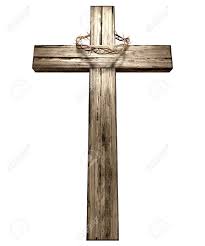The images below are peace signs. The first one is the internationally recognized symbol for peace. It is also known as the nuclear disarmament symbol, because it was designed for the British nuclear disarmament movement by Gerald Holtom in 1958.

The symbol is a combination of the semaphore ( the telegraphy system conveying information at a distance by means of visual signals) signals for the letters "N" and "D", standing for "nuclear disarmament." The letter "N" is formed by a person holding two flags in an inverted "V", and the letter "D" is formed by holding one flag pointed straight up and the other pointed straight down. Superimposing these two signs forms the shape of the center of the peace symbol.
Holtom has written that one of his inspirations for the symbol was the despair he faced at the constant threat of nuclear war. A correspondent of Holtom's says that he came to regret the symbolism of despair, as he felt that peace was something to be celebrated and wanted the symbol to be inverted; he wanted it reversed to represent the change in him from the despair of the possibility of war to joy because of the possibility of peace.
This is an image of the first peace badge, made in ceramic for the Campaign for Nuclear Disarmament by Eric Austen from Gerald Holtom's original design.
The next one is one you may have seen people use in a gesture. It has been used to represent victory during the World War II, and also became popular during the 60s when activists against the Vietnam War and in subsequent anti-war protests adopted the gesture as a sign of peace. Both uses represent a desire for war to have ended.
So both of these symbols came out of a desire for peace and indication of peace in the context of war. They have come to mean so much to us, even if the original context of how they came about seems long ago. Personally, I see more of the 1958 peace symbol as an icon, but I am sure many of you remember when the gesture of the peace sign became popular in the 60s.
This makes me think about our current symbols for peace. I'd like to say that the cross has been one, but for so many it, too, has been a sign not of peace, love, and reconciliation, but of hatred, judgment, and, yes despair. Many around the world suffer to follow Jesus. We have the need for peace in our world and in our hearts. For me, the cross has been a sign of peace, and so much more. It came to mean that to me for the first time in the 90s when I was facing my own spiritual warfare, asking myself "who am I?" "why am I even here?" "why did God ever create me?" and many others that seemed to attack the very core of who I thought I was. The cross has given me a sense of identity, purpose, and community...a sign of peace.

John 14:27--
"Peace I leave with you; my peace I give to you. I do not give to you as the world gives. Do not let your hearts be troubled, and do not let them be afraid."
It is with this hope for peace that I offer you this prayer*:
"Peace I leave with you; my peace I give to you. I do not give to you as the world gives. Do not let your hearts be troubled, and do not let them be afraid."
It is with this hope for peace that I offer you this prayer*:
"O day of peace that dimly shines
through all our hopes and prayers and dreams,
guide us to justice, truth, and love,
delivered from our selfish schemes.
May the swords of hate fall from our hands,
our hearts from envy find release,
till by God's grace our warring world
shall see Christ's promised reign of peace.
Then shall the wolf dwell with the lamb,
nor shall the fierce devour the small;
as beasts and cattle calmly graze,
a little child shall lead them all.
Then enemies shall learn to love,
all creatures find their true accord;
the hope of peace shall be fulfilled,
for all the earth shall know the Lord."
Amen.
*"O Day of Peace That Dimly Shines," Carl P. Daw, Jr., United Methodist Hymnal, 729.
In Christ,
Jack
No comments:
Post a Comment